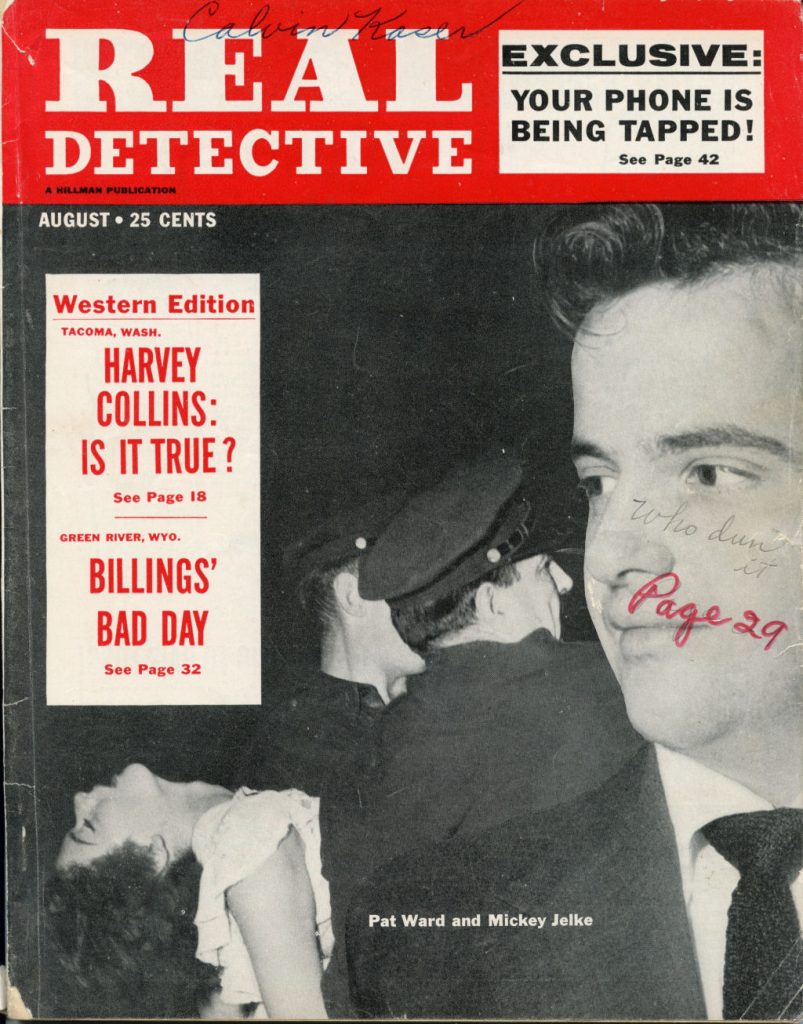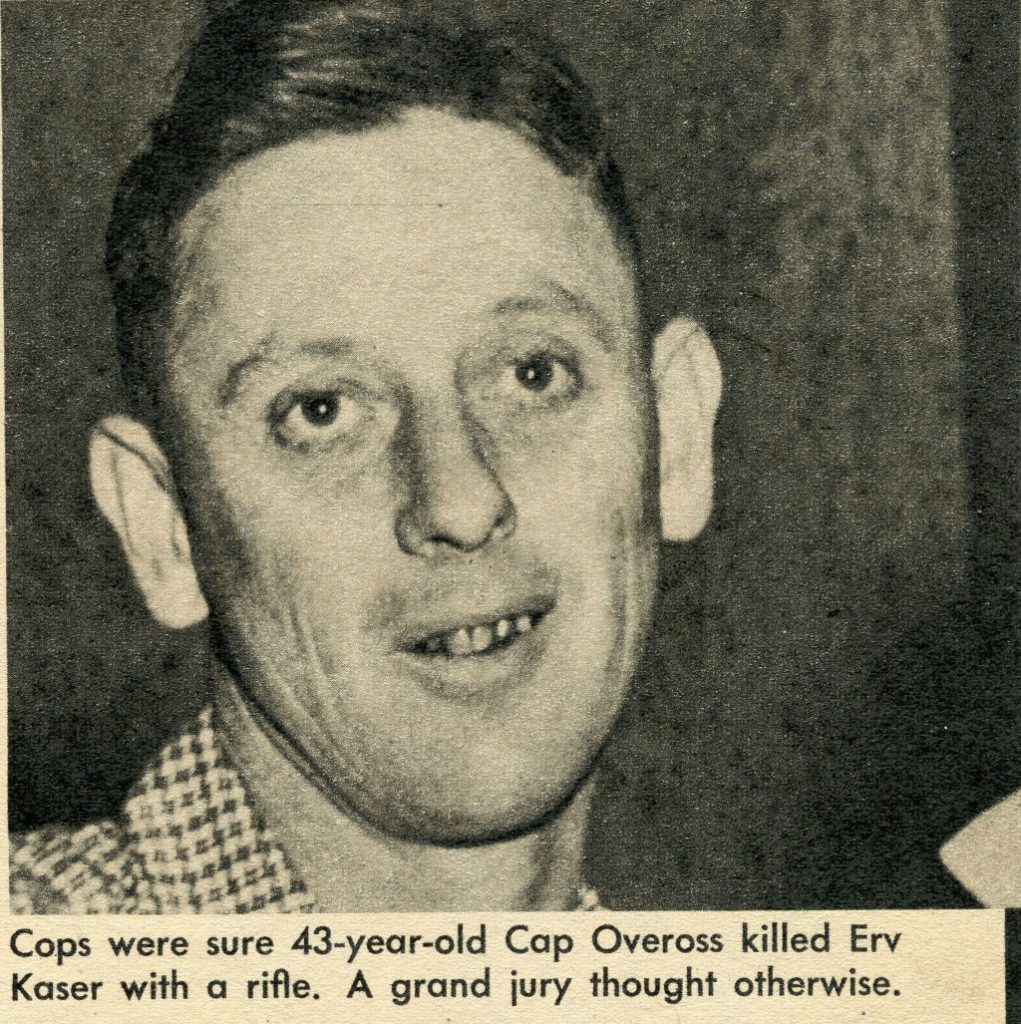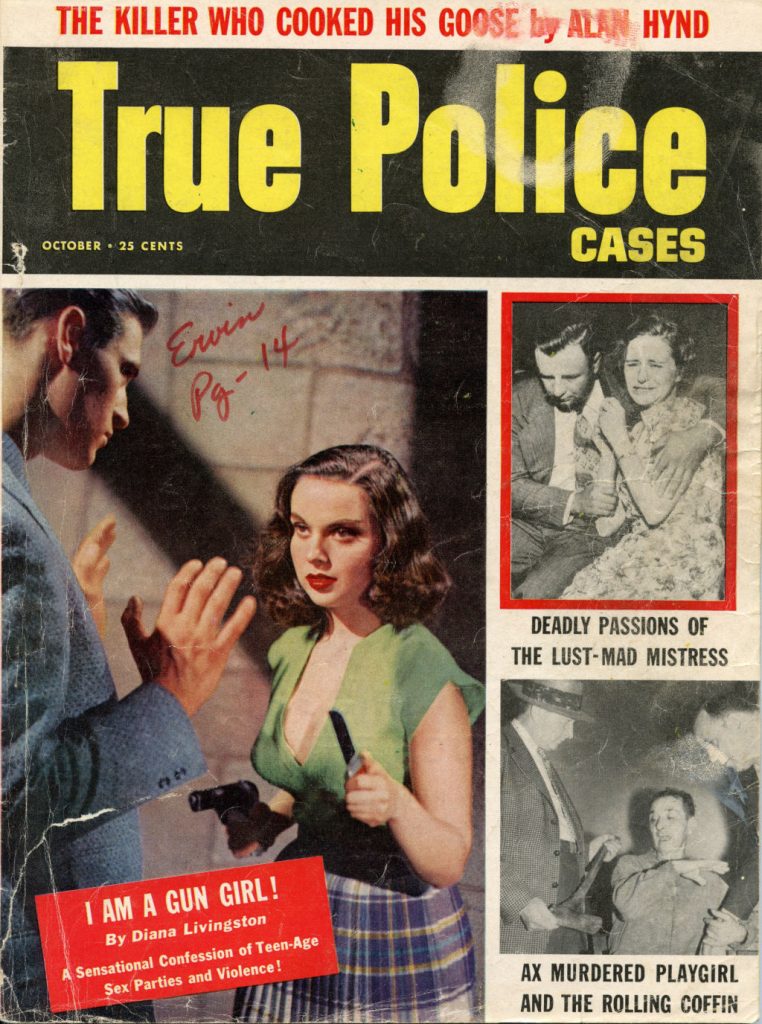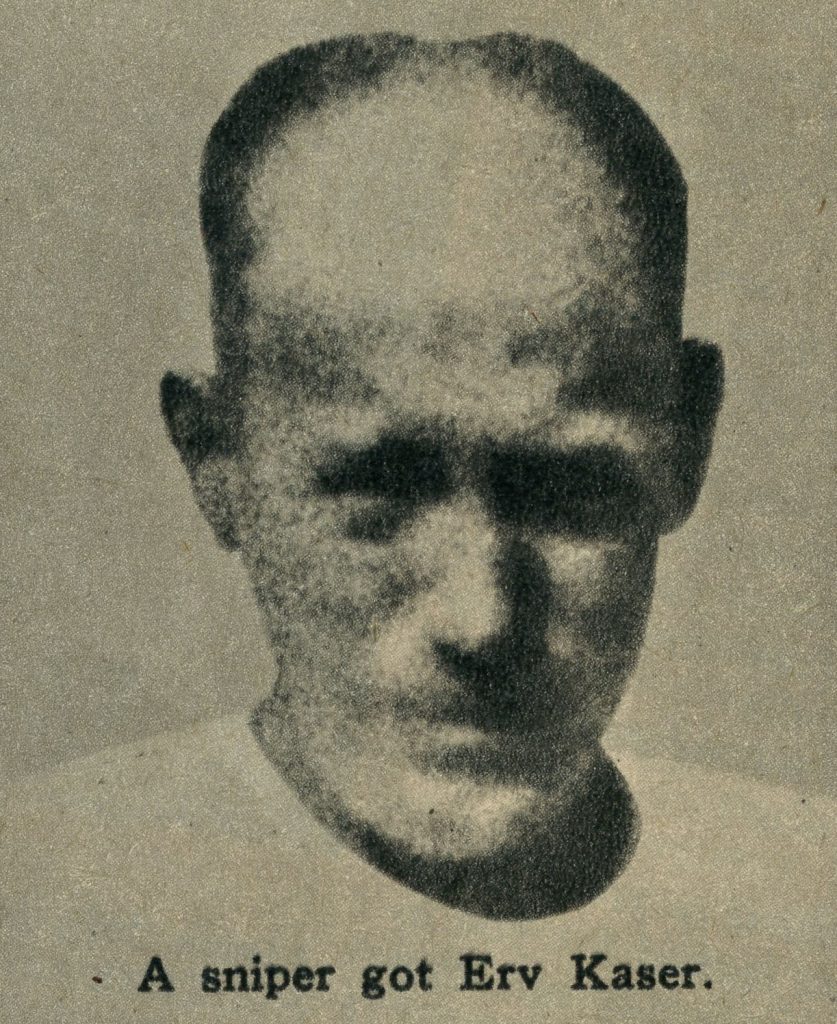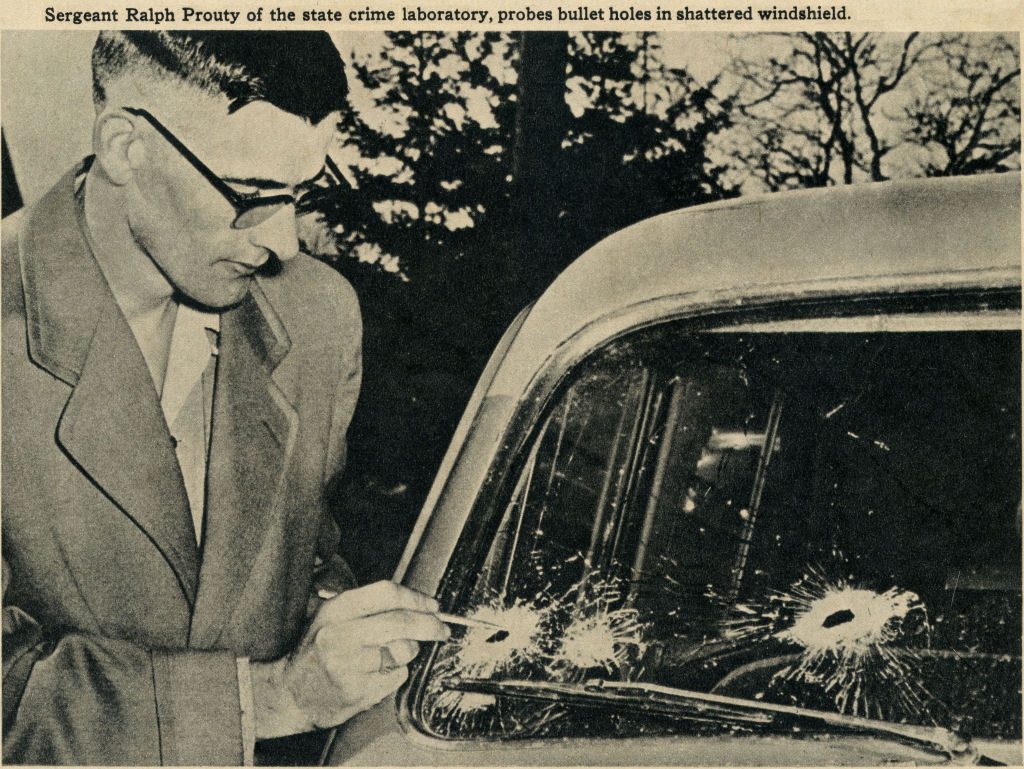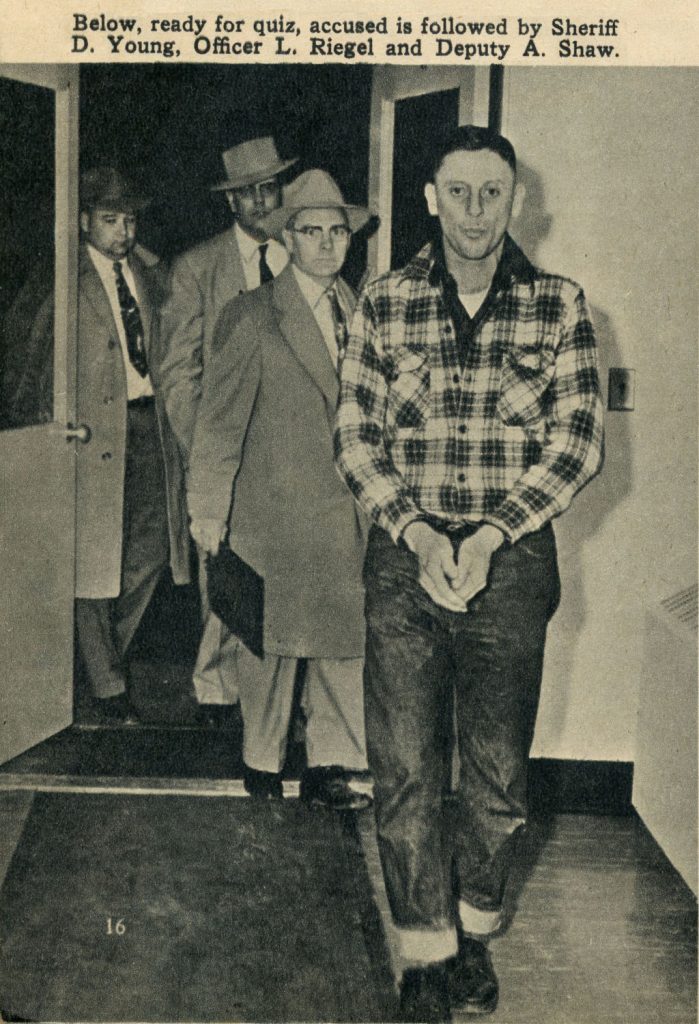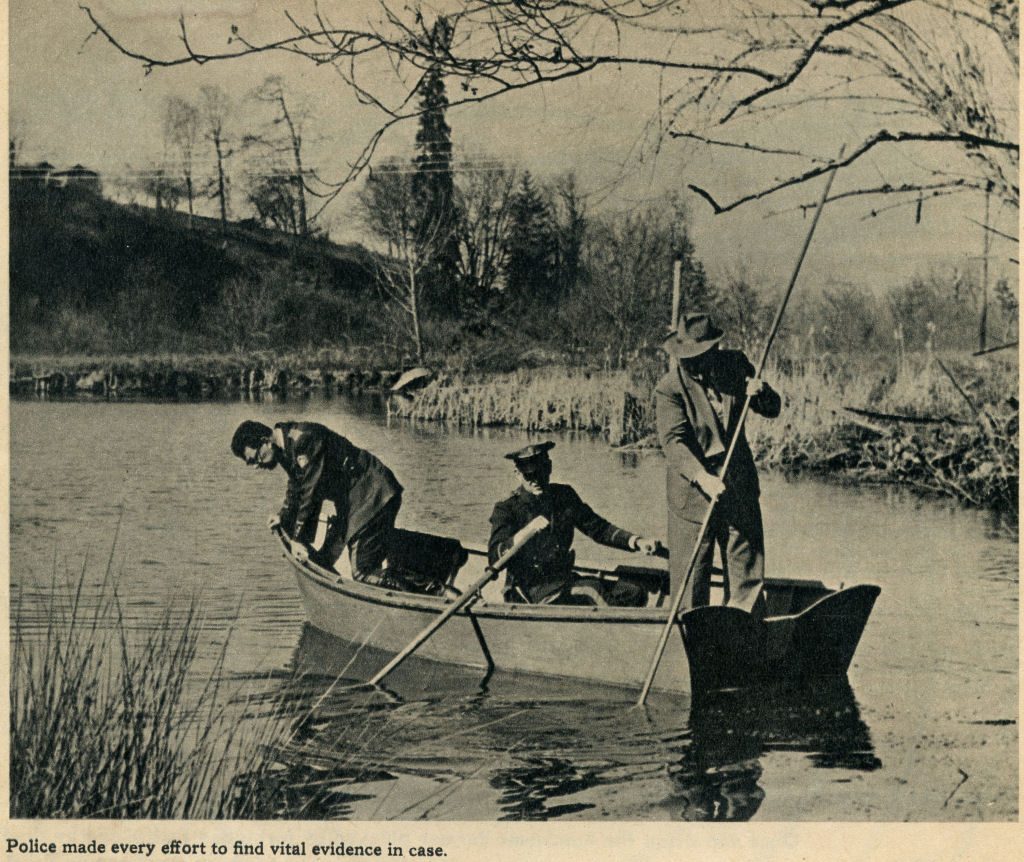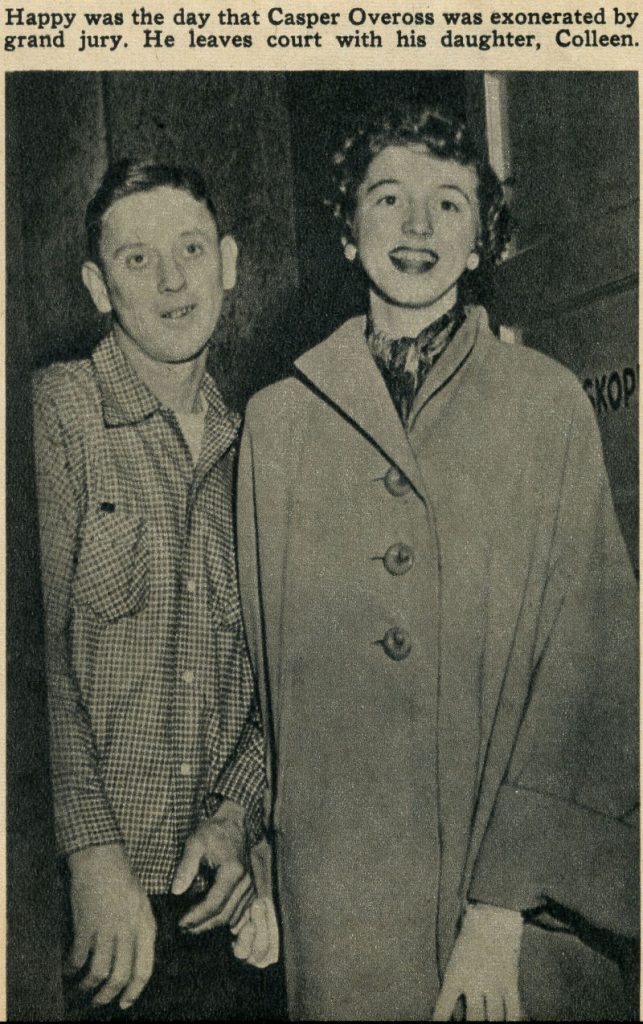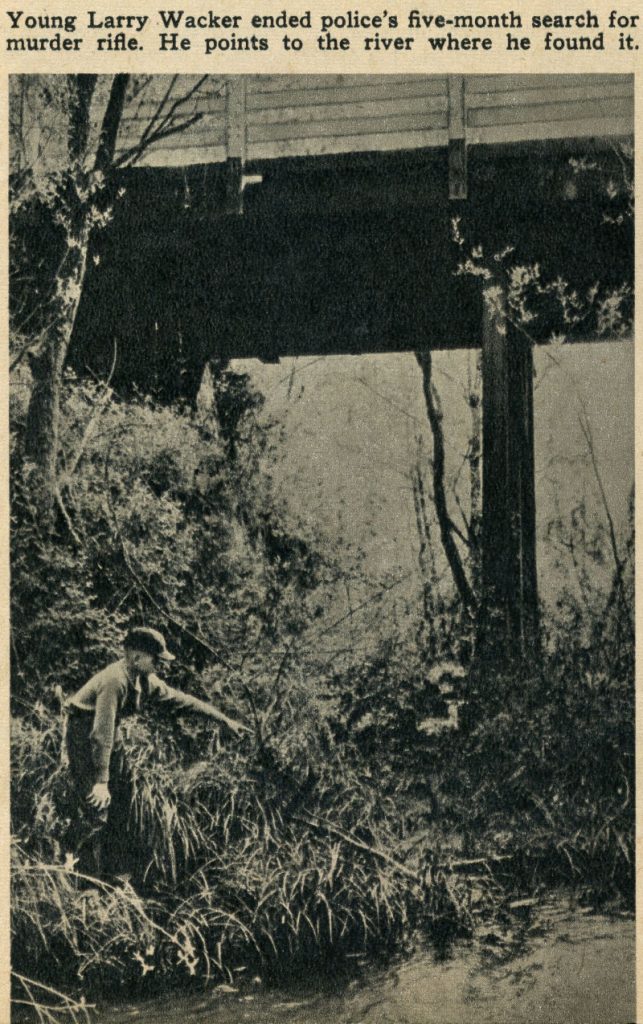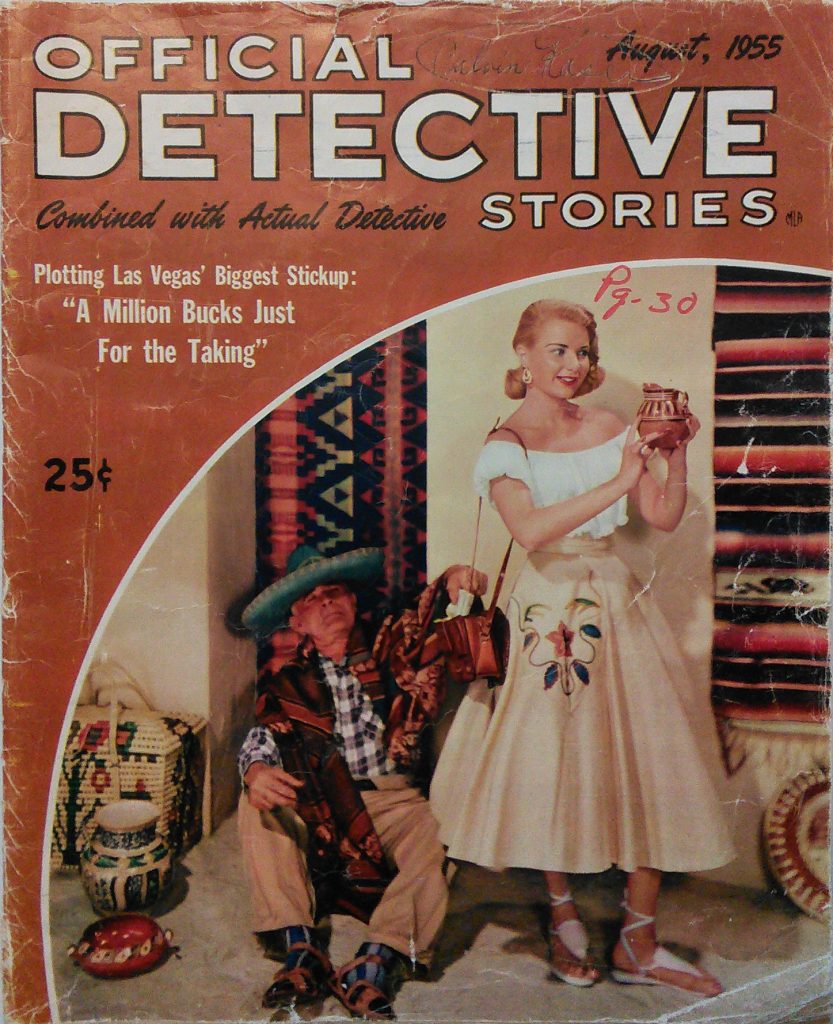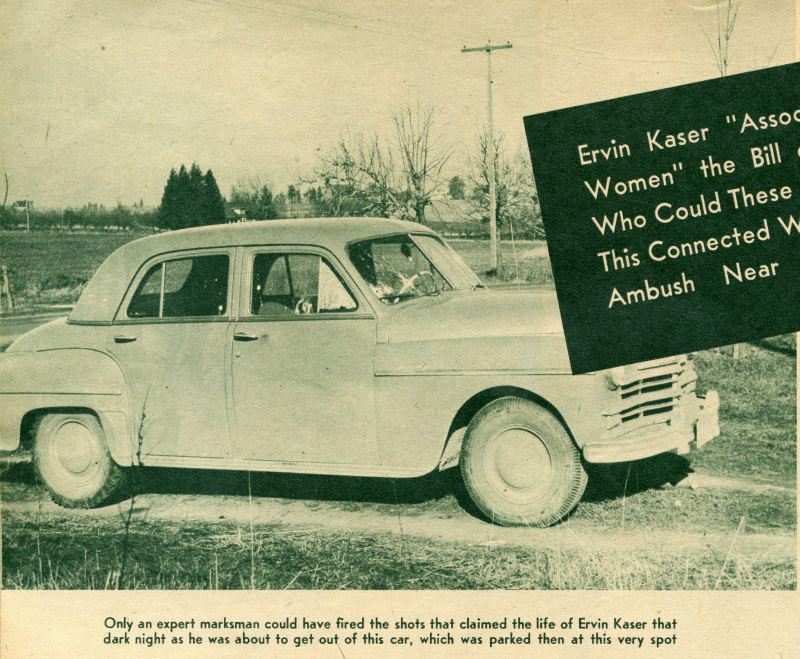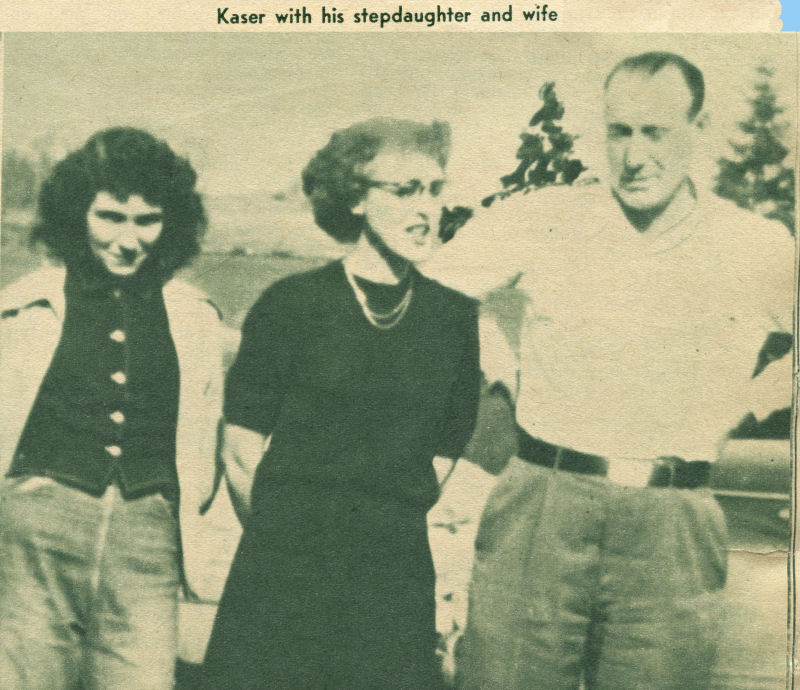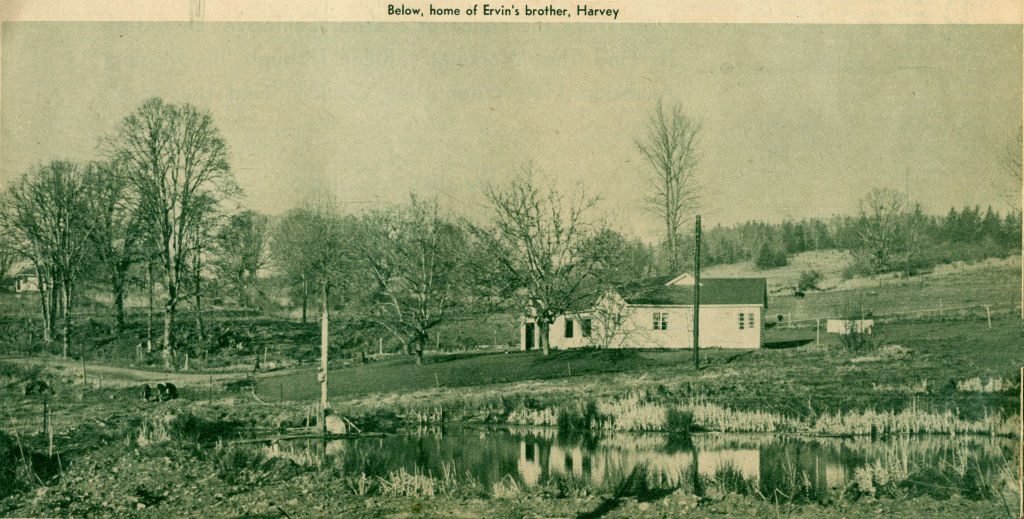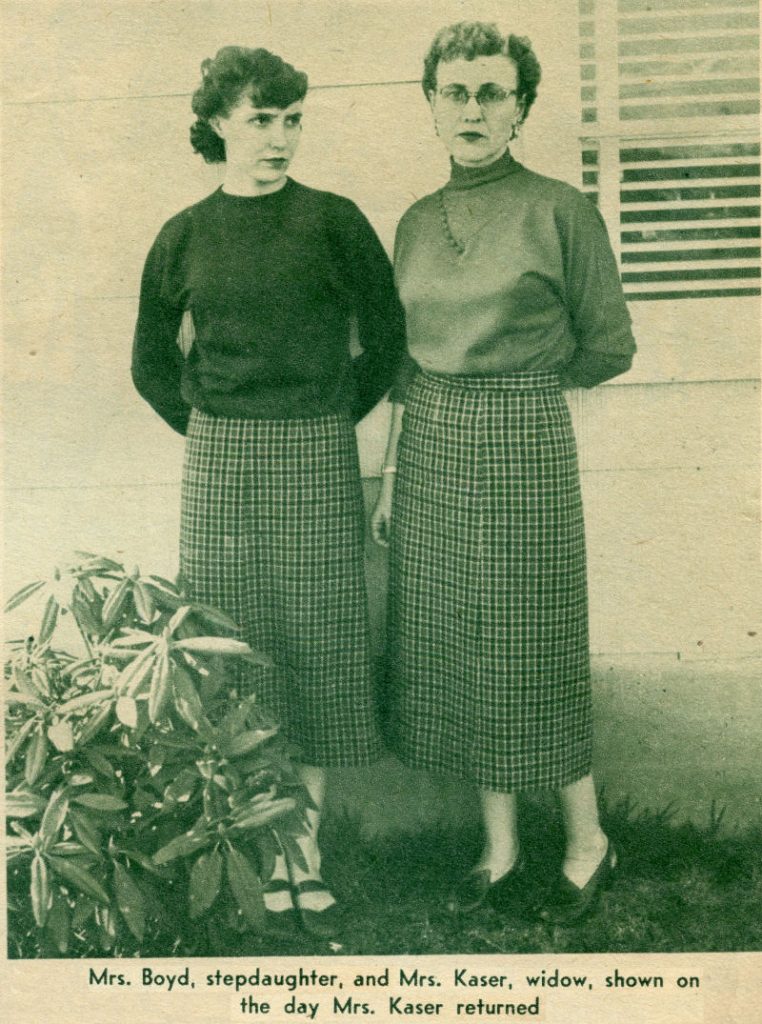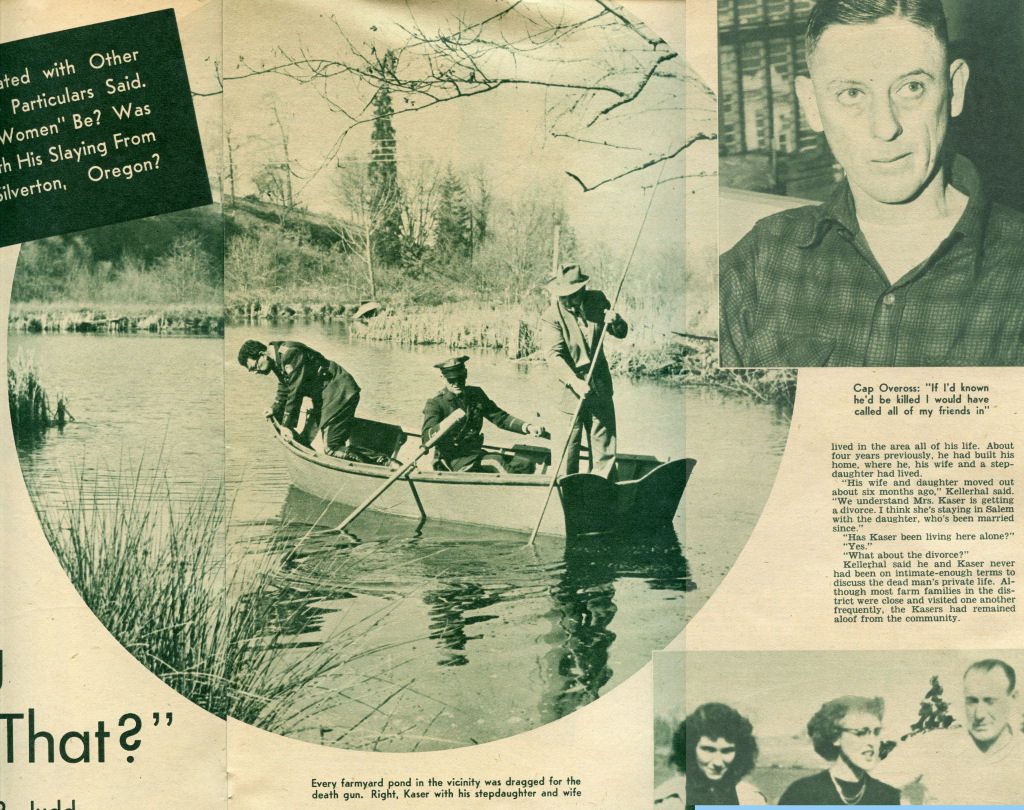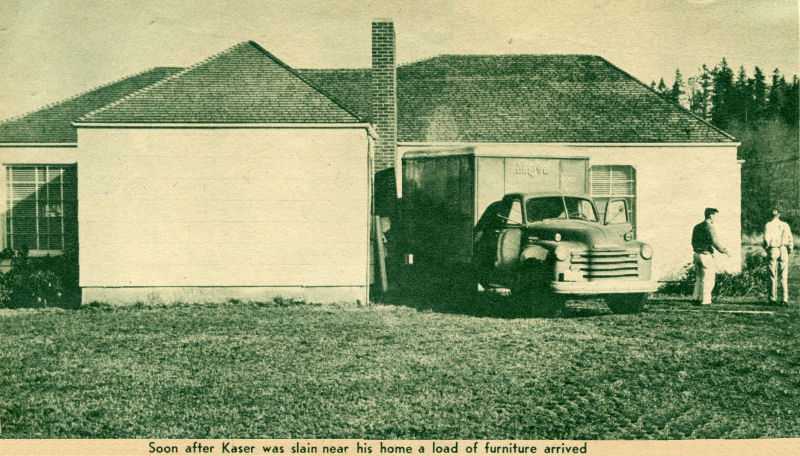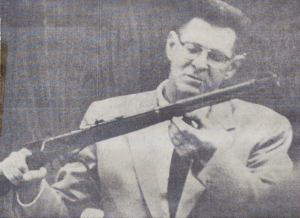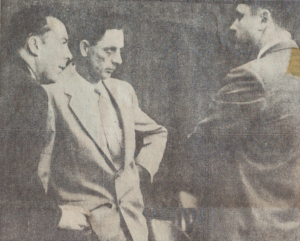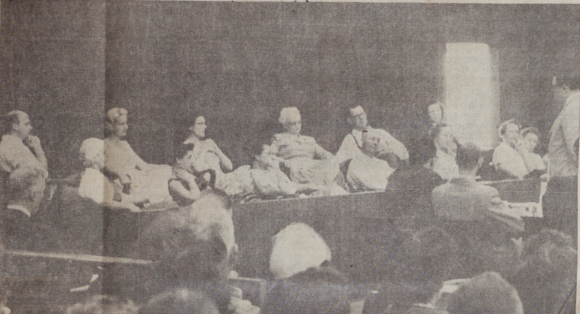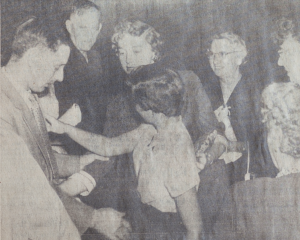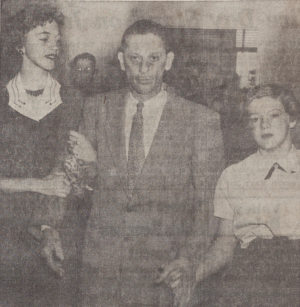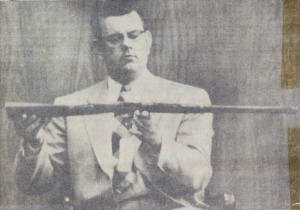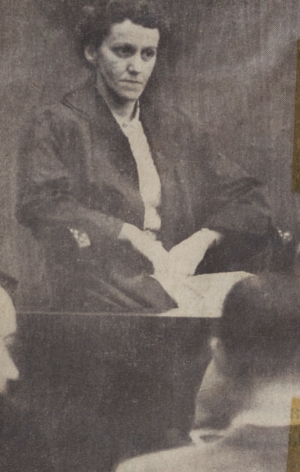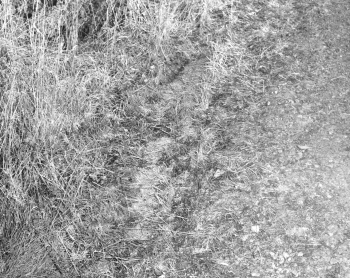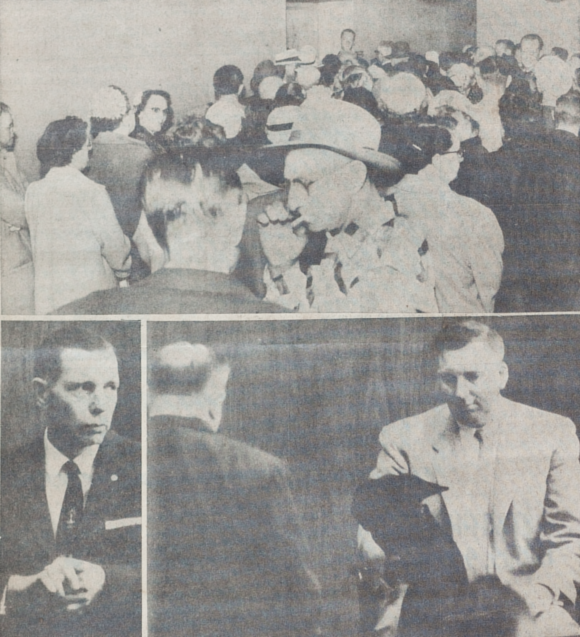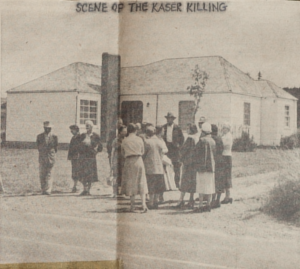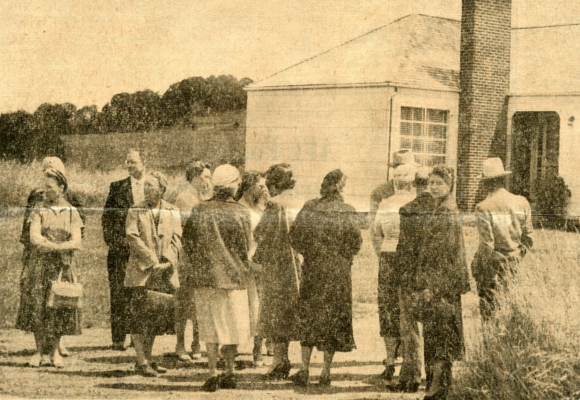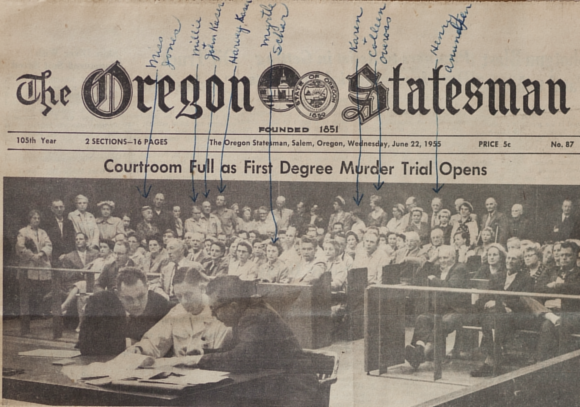Much of this final chapter is memories, stories, suppositions, and opinions. I’ll attempt to keep it reasonable and not spiteful or hurtful to anyone reading this, as that’s not my goal. But, in order to try to show how this murder affected a large group of people, it’s effective to tell how people felt about it, how they reacted to it, what they thought about it.
Absolute truth is a very slippery eel. Even in math and physics, things we often think of as being absolute and true, facts must be accompanied by disclaimers and “Yeah, buts…” You might say that it’s an absolute fact that 1+1=2, whereas I could just as easily say it’s an absolute fact that 1+1=10 (in binary, base 2). If it’s true that truth is a slippery eel for the simplest of mathematical and scientific facts, what are we to make of truth when applied to human beings, history and events. The only person that knows the ‘truth’ about your life is you. You’re the only person that has lived it in its entirety, that’s been there for every moment of it. But you are a different body and a different brain every day, every moment. Our memories are built, then some are wiped away, only to have new ones built on top of them. Put ten people in a room to watch an event happen, then ask them all to write down an account of what happened. You’ll get ten different accounts, at minimum (as some people will contradict themselves, resulting in multiple accounts from the same person). And all of those accounts will be false, because all of those accounts will be incomplete. They will consist of a series of statements that, taken as a whole, strung together, will tell a story of what that person perceived or think they perceived.
About all we can really do is to say that some stories are more true than others. The newspaper stories about Ervin’s murder are more true than the “true crime” magazine stories. The police reports are more true than the newspaper stories. But none of them contain all the facts, they can’t. History only happens once, and the best we can do is create new history by telling stories about old history. We can make our stories be factually more true by trying to verify facts from multiple sources, or we can make our stories be emotionally more true by describing how people felt or imagining how they felt, by dramatizing history. No matter what we do, we will never be able to tell the whole truth, and nothing but the truth.
Even the police reports are subject to error and misunderstanding. The investigators interviewed people, asking them for their memories of what happened, sometimes quite a while in the past, sometimes when they weren’t really paying good attention. Human memories have repeatedly been shown to be very unreliable. The police took notes in their little notebooks, then later, back at the office, and sometimes days later, they would transcribe those notes into reports, using their notes to trigger their memories of what the witnesses recalled of their memories. Lots of opportunities for mistakes, misunderstandings and bad memories to alter “the truth.”
But, with all that said, if you collect enough memories, enough information, it’s frequently possible to “read between the lines,” to assemble a mental picture of what might have happened, what probably happened, and what the people involved were generally like. The best I can say, as they say in the movies, is that this story is based on true events. I’ve tried to follow the “true events” as closely as possible. Hopefully, you will always keep an open – but questioning – mind.
In this book, I’ve tried to remain as objective as possible, but keep in mind that this is my story of what happened, and that I was only two years old at the time. So, my story necessarily depends upon the memories of others with their inherent lapses and biases, the written records with their inherent lapses, mistakes and the biases of those who wrote those records. It also depends upon my own views and perceptions of everything I’ve been able to gather, the things I have not been able to gather, and how I’ve chosen to present all of it. The more information you can gather, the more stories you listen to, and the more reasoning you apply to that information and those stories, the closer you may arrive to a shimmering shadow of the truth. Unfortunately, I’ve been unable to talk with anyone from the Oveross family, so, while I’ve tried to remain objective and balanced in the telling of this story, that’s one large chunk of information that I’ve not been able to gather.
The jury found Cap Oveross “not guilty.” The newspapers and magazines asked when Oregon would capture the ‘real’ killer, said that the killer was still “out there,” waiting to strike again. Was Cap innocent? Did someone else kill Ervin? A number of people pointed their finger at Ervin’s brother Harvey, because Harvey had struck Ervin during a dispute the previous year and made clear that he didn’t like his brother. Then there were the “two mysterious men” in a car parked behind the Evergreen School. What about the other husbands of women Ervin had tried to romance? These are all things the jury may have considered.
But you should consider:
1) The murder weapon was proven to be one of two rifles sold by Ames Hardware in 1949.
2) The other of those two weapons was purchased and still owned by Steve Zolotoff.
3) Ames Hardware had a receipt showing Cap Oveross bought one of those rifles in 1949.
4) Multiple people swore they’d seen, borrowed, or used Cap’s 30-30 rifle between 1949 and Christmas 1954.
4) Dan Gilham placed Cap Oveross at the Gilham house less than 10 minutes after the murder, at which time Cap already knew that Ervin had been shot.
5) Cap later told the police that he had been in taverns the whole evening, had never been in the area of Ervin’s home that evening, and that he had never owned a 30-30 rifle.
6) Multiple people placed Cap or his car in the area of Ervin’s home that night.
Then, we have this: for a while after the trial, Cap said very little about it. But apparently, as some point, he realized that he was safe from “double jeopardy,” the fact that once a person has been accused of a crime, tried and acquitted, they can never be tried again. This protects citizens from being persecuted by the government, something that used to happen with some frequency, causing the framers of the constitution to include protections against that. That meant that Cap could happily go around town admitting, even bragging, that he had killed Ervin Kaser, and he would suffer no (legal) ramifications.
Harvey Kaser’s youngest son told me this story:
In 1975 or ‘76, I had a summer job at Redman, across the street from the Milltown tavern. I went into the tavern with some friends one Friday after work. I elbowed up to the bar next to an old guy sitting on a bar stool. The barkeep asked for my ID, and I happened to plunk down my driver’s license right in front of the old guy. The old guy looked at the license, looked up, and said, “Are you related to Harvey Kaser?” I told him I was his youngest son. The old guy said, “Well, I killed your uncle.” The bartender went pale and told him to shut up. The old guy turned out to be Cap Oveross. I asked my brother Jeff about this once, and he said that in later years Cap would get drunk at the Milltown Tavern and start bragging about killing Ervin.
At the trial, Ted Finlay testified, “I would say it definitely was not” Oveross’s car he saw leave the murder scene a few seconds after hearing four shots. However, Calvin Kaser later recalled:
Manny Kellerhals and Ted Finlay were scared shitless that Cap was going to come back and shoot them. I was working at the S&M Truck Line, and Ted Finlay had an electrical shop and would come down there all the time to pick up his freight. He’d say, “I knew who the hell that was, hell, that was Cap, sure as hell. I heard those shots, and I heard that car come off, and I was up in the upstairs window.” Cap drove a Ford, and they had a round deal like this right in the grill, and Ted said, “I can still see that round emblem, and hell, it was Cap’s car. I couldn’t see him, but I’d bet my life that it was Cap’s car.”
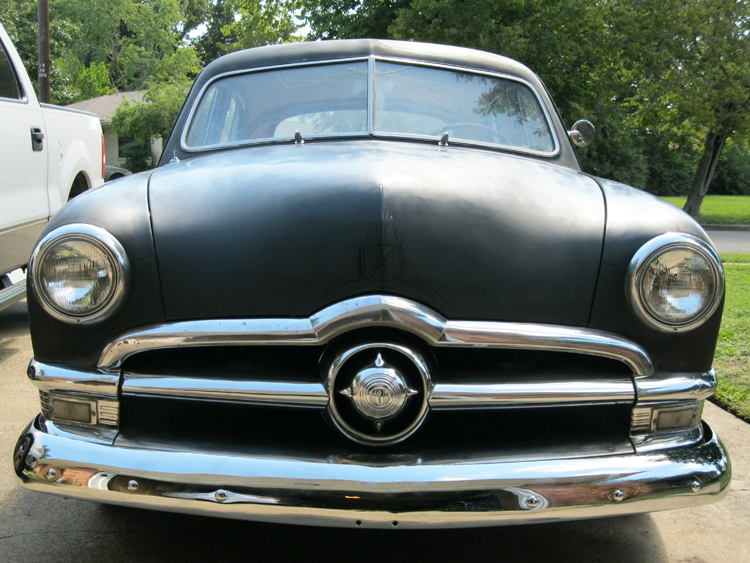
When all the evidence is examined with an open and unbiased mind, there can be little doubt that Casper Oveross murdered Ervin Kaser. So how was he found not guilty? The answer to that, of course, is that our “justice system” is not perfect. It was intentionally set up as an ‘adversarial’ system in which the prosecutor must prove their case beyond a reasonable doubt to a jury of 12 citizens. Jurists are supposed to be objective, to judge the case based solely on the evidence presented. But, of course, they can’t. Many of them will have heard of the case ahead of time, and all of them will carry prejudices and beliefs that were shaped by their society and their experiences.
The prosecution seems to have done a poor job of presenting their case to the jury (more below). The job of defense attorneys is not to prove innocence, but rather, in any legal way possible, to prevent the prosecution from doing their job. In the case of the Oveross trial, it seems that the defense did an excellent job of throwing up smoke screens (“look at all these other jealous husbands” and “look at all these mysterious cars and men that were following Ervin Kaser around”), preventing the prosecution from entering crucial items into evidence, and painting the victim as a nasty bad-man and their client as an innocent, simple carpenter who, even if he had killed Ervin, would have been justified because of the way the nasty bad-man had broken up his marriage. You have to keep in mind that this was 1955, the time of Leave It To Beaver and Father Knows Best, of white bread and apple pie, a time when very few marriages ended in divorce, sex outside of marriage was verboten, and an unmarried woman getting pregnant was so shameful that she might as well burn herself at the stake before she was impaled by society’s sharpened, pointing fingers. The jury was made up of nine women and three men, and it wouldn’t take a lot to make them return a not guilty verdict. The newspapers and magazines liked to say that the murder remained unsolved. That’s a poor choice of words. There’s no doubt in my mind that the murder was solved. It’s just that no one was ever convicted.
A lawyer I know, who read a preliminary version of this book, had quite a few thoughts about the trial:
There is a rule of thumb that juries tend to come back fast with a decision if its clearly in favor of the defendant. It looks like this one took a little over a day. I would guess there were enough people on the jury that were not going to vote for conviction, and that after maybe two or three weeks of sitting through a trial, they decided it was time to go home and call it a day. It was hot; they didn’t like camping out.
I can’t tell for sure, but it looks to me like the defense on the gun was this: the Oveross expert soaked a Winchester in Pudding River water for 11 days, and it must have looked like it was in worse shape than the murder weapon, suggesting that the murder weapon was thrown in the river sometime after Oveross departed for Alaska. [EK note: Of course, soaking a gun in shallow, warm water would have a very different result than one where the barrel was buried in cold mud, where the supply of oxygen needed for rusting would be much lower. Also, Cap may have kept his rifle well-oiled, which would have protected it, whereas the test rifle may have been brand new and never oiled. So many variables…]
In the name of establishing that Oveross had left for Alaska, the defense paraded all of his family members in front of the jury, just to give the jury a look at them. The respectable school teacher, the daughters, and everyone else. My guess is that everyone in the family came across as pretty normal, decent people, whereas Ervin Kaser had some baggage.
When Ethel Oveross testified about the mysterious men, and if she was not cross-examined about it, then it casts a lot of doubt about whether it was Oveross or someone else. It looks like she was not cross-examined about it, and I would guess nobody was going to pick on her. That puts the jury in this position: why would she lie about it? Clearly, she didn’t care that much about Oveross because she was running around behind his back. It creates a lot of doubt. I do know this, though: the defense attorneys knew she was going to testify about the mysterious men and what she was going to say about it. I would guess the prosecutors had no idea that she was communicating that to the defense, somehow. Ethel was probably faced with her daughters blaming her for having their Dad put in prison or worse, so may have elaborated on the story about the mysterious men that had followed them.
Ken Brown helps blow the trial by talking about “dry gulching” Ervin, that he was “shot down, shot in the back, dry gulched, shot down like a dog without a chance to turn on his attacker.” He never should have done that.
Hindsight is 20-20, but you can really see how this trial was mishandled. I’ve been through a few of these things and lucky enough to learn a few things from some trial lawyers and judges who have been through a lot of them. After a few days the jury just shuts down and gets tired of it all. Danny Gilham and his stepmother were the strongest witnesses for the prosecution and should have been the first witnesses out of the box, not at the end of 3 weeks. Everything should have centered on the fact that Cap Oveross shows up less than 10 minutes after Ervin Kaser was shot and is talking about it (they lived 5.3 miles away, according to the police). Then, you ask the Kellerhalls to establish the time of the shooting and maybe a couple of others, but not everyone in the neighborhood. And your question to each would be this: “how did you learn about the shooting? Who did you talk to at that time? Did you call Cap Oveross?” And then everything boils down to this argument: it is undisputed that Cap Oveross knew about the shooting less than 10 minutes after it occurred. No one told him about it. The only way he could have known about it that quickly is if he did it himself.
You tend to win or lose these things based on the number of contradictions or inconsistencies the other guy creates. The more witnesses that you have, the more contradictions you will have. Stuff like who said what in taverns, or to the police, or the comings and goings of all the cars, just feeds into that. Never have or allow the same witness to testify three times.
Anyhow, I’d say Ken Brown must have been a pretty young guy at the time and he must have been really inexperienced. You can see they sort of did a methodical, “leave no stone unturned” type of approach, and it just backfired. The one thing I’ve learned about these things is that you don’t do a build up to a crescendo – you put your best witness on first.
According to Edith, for about 30 years after the murder, Harvey wouldn’t allow Ethel or Colleen and Danny into their house because he felt, rightly or wrongly, they’d lied on the stand in a way that might have contributed to Cap getting found not guilty. In order to visit with her twin sister, Edith had to go to where Ethel worked in Stayton. In the early 1980s, probably after Cap had died, the rift between Harvey and Ethel’s family was somewhat healed, but thirty years of anger had caused scars that could never be erased.
It’s hard to read the police reports, newspaper stories, and recollections and not get the impression that Cap Oveross thought he was sharp enough to out-smart the police. He proved rather foolish by going around for six months before the murder threatening to a lot of people that he would kill Ervin, including lying in a field at night with two Silverton police constables watching his (ex-)house to try to catch Ervin visiting Ethel. He tried to set up an alibi that he was in two taverns in town the whole evening, and then drove straight from the murder to the Gilham home and told Danny Gilham that, “Ervin has three slugs in him, and I was with you last night.” But then, when the police question him, he switches back to, “I was in taverns all night and no where near Ervin’s house all evening.” He got incredibly lucky at the trial.
I never knew Cap Oveross, but reading between the lines you can build an image of what his life was like. Edith once said:
Ethel had a hard life during her early marriage. Ethel and Cap lived in an old rundown house at Four Corners (where Abiqua road intersects Hwy 213) when they were first married. Our father [Fred Knight] was concerned and brought chickens, eggs, potatoes and such to Ethel because they didn’t have enough to eat. Cap drank up everything that he made. Colleen had a case of ringworm that was so bad when she was a young girl that she nearly lost all of the hair on top of her head, because they couldn’t afford to go to the doctor.
Calvin said something similar:
Ervin was running around with Ethel, but Ethel and Cap were separated. Cap, he blamed Ervin for their breakup. But, hell, they were having trouble long before that. Cap, he was a damn boozer, he drank up everything he made. Ethel was having to work to support the kids, cause he drank everything. He worked only enough to subsist on.
These memories certainly should be taken with a grain of salt, but there is evidence to back them up. Cap was well known in the taverns at the time of the shooting and was still patronizing them regularly thirty years later. He never remarried. Besides his anger at Ervin, he had also accused his neighbor Wayne Moore of “chasing around” with Ethel. I can imagine asking him shortly before he died, “What would you consider the most important moments of your life?” and I wonder how near the top of the list would be shooting Ervin Kaser. Would that have come to his mind before my two daughters? Before marrying Ethel? Before building a good life with friends and community? From a distance, it seems like a very sad life to have murder be a dominant, central feature. They say that, “Revenge is a dish best served cold.” But I have to believe that, “Revenge is a dish that poisons the server as much as the served.”
I also have to think about the effects murder has on the people around it. I suspect that, in his anger and bitterness, Cap was focused on getting his revenge and didn’t think much about the affect it would have on his family, friends and neighbors. He may even have thought that he’d be viewed as a hero, we don’t know. But we can imagine how this affected the lives of those around him and Ervin.
The divorce of their parents was probably very stressful on the Colleen, 18, and Karen, 14. It’s pretty clear from the police reports that Colleen was very defensive of her father and may well have been ‘informing’ on her mother, telling her father when Ethel would go out and come home, essentially (unwittingly) helping him to learn their habits and patterns, making it easier for him to follow them and set up the murder. It seems that after the murder, Colleen was much more favorable to her father than to her mother. A neighbor girl, Charlotte Moore, told the police:
Colene was very mad and she mentioned something about Mrs. Gilham, the old biddy, being on the side of the law.
Then, the police were suspicious of her boy friend, Danny Gilham, so two of the most important people in her life seemed in danger. Of course she didn’t want to cooperate with the police. Colleen didn’t want Danny to cooperate with the police either, because that would further endanger her father. So, Danny is caught between the police and his girlfriend because his stepmother has already spoken to the police about Cap stopping at their house. He was the perfect example of being between a rock and a hard place. Then, Danny and Colleen got married, and for the rest of their lives, every family get-together that involved either of Colleen’s parents would have had this large shadow looming over all of them, impossible to evict, impossible to forget. There’s little information about how Karen reacted to these events, but one can easily imagine the day-to-day life of a 14-year old girl in a very small community who’s dad has been accused of murder, very publicly in the news and on everyone’s lips for six months.
During the trial, Ethel had to take the stand and testify. If her testimony helped convict Cap and he got sent to prison for life or executed (Oregon had the death penalty at that time), what would that do to her relationship with their daughters? And yet, her lover had been shot dead by her ex-husband. She, too, was between a rock and a hard place.
What about the victim’s family? Ervin’s mother Sarah had lost her husband Fred just a year and a half before, and now her oldest, first-born child is shot to death less than a quarter-mile away from her home. When asked how his mother took the news of the murder, Calvin said: Oh, she was a basket case. She’d want to go over to the cemetery, and you’d no more than drive into the cemetery and she’d start crying, and she’d be crying almost until we got home, unless you could get her talking and get her mind off it. But she had that stroke in the fall of ‘55, not too long after Ervin was shot, along in September, I think. I’m sure she had a pretty good idea why Ervin was shot. She never talked about it much. She never went to the trial. On one trip to the cemetery to visit Ervin’s grave, she said, “I know he wasn’t a perfect boy, but he didn’t deserve a bullet.” My mother, Wilma, said: I think that worked on her so bad, that she got so that she wouldn’t even sit in the living room in the night time. She’d sit in the hallway with just one little light in there. She figured if someone had shot Ervin, someone would come and shoot her, too. When you came in the front door, the dining room was on the right, and the living room was on the left, and right in the middle was where the furnace came up through a grate, and there was a doorway that went into the hallway. Calvin picked up the story: It wasn’t a hallway, it was a cloak room, but we called it the hallway. It had five doors going out of it, one upstairs, one into the kitchen, one into the bathroom, and one into their bedroom. It was just a small, square room. When company came, that’s where we hung their coats. It must have been an eight by ten room, and that’s where she would sit. All she had was a straight-backed chair and a card table. Then, in September, she had that devastating series of three strokes that basically ended her life, although she lay in the nursing home for five years before she died.
Ervin’s brother Harvey, who had also been Cap’s brother-in-law and neighbor, whose kids had played together for years, was also investigated by the police because he’d gotten into a fight with Ervin. People knew that Harvey and Ervin had argued. Calvin remembered it this way:
Sometime after Dad’s hop yard was pulled out, the place was sewed to grain. [Probably 1954, as Calvin’s dad Fred died in August 1953, and the murder was February 1955.] I know that’s what Ervin and Harvey got into a fight about, because they had somebody come harvest Mom’s grain, and Ervin took Mom’s grain down to the Wilco… well, it was Valley Co-op at that time, and the elevator was still there, and he put her grain in his name. That’s what he and Harvey got into it about, and that’s when Harvey poked him. Then Harvey went down and straightened it out and put that grain back in her name. That would’ve had to have been about ’53 or ’54.
So, when Ervin got shot, a number of folks told the police about the two of them getting into a fight. Of course, the police already had good evidence that Cap was the culprit, but they had to investigate and rule out any and all other possible suspects before the case could go to trial. But Harvey and Edith were also caught between a rock and a hard place: the victim was his brother, and the man accused of the murder had been married to her twin sister, up until a few months before, and was the father of their nieces.
When talking to Cleta McMorris about the murder, she said, “Oh, Mary [Ervin’s wife] just made a spectacle of herself at the funeral, she threw herself on the casket, and was hysterical.” When I mentioned this to my dad, Calvin, he said:
The only thing I remember about Mary, we were at the folks’ house after the funeral, a whole bunch of us, and she was standing in the corner over the furnace register. Nobody was saying anything, and she just blurted out, “I don’t care what any of you think, I still loved him!”
What about you? Whoever you are, you have been affected by the murder just by reading about it, whether or not you’re related to the families involved.
Hundreds of peoples’ lives were directly affected by the murder, and its effects still echo today in the lives of people who lived through it and in the lives of their descendants, knowingly or not. No story of a murder has a happy ending. No one is a complete saint, and no one is a complete villain.
By most accounts, Ervin was not the nicest man in the world. He certainly didn’t deserve to be murdered, but it’s clear he was not innocent.
At his trial, Casper Oveross received a verdict of not guilty, but it’s very clear to me that he certainly was not innocent.
And so ends my blogging of the story of the murder of Ervin O. Kaser. I’m well along in the process of completing the book form of this story, which I hope to have finished and “put to bed” by some time in February 2019, almost exactly 64 years after the murder.
Blogically yours,
Everett

